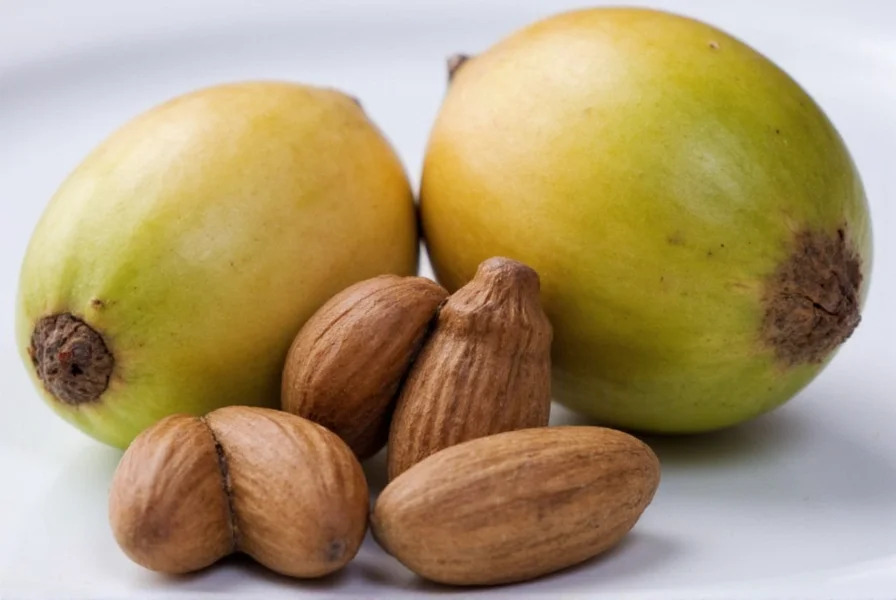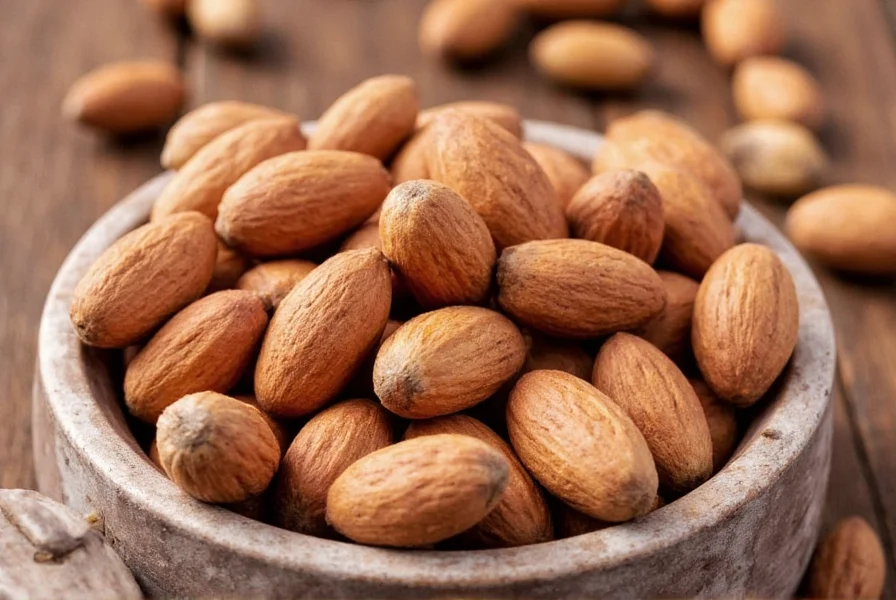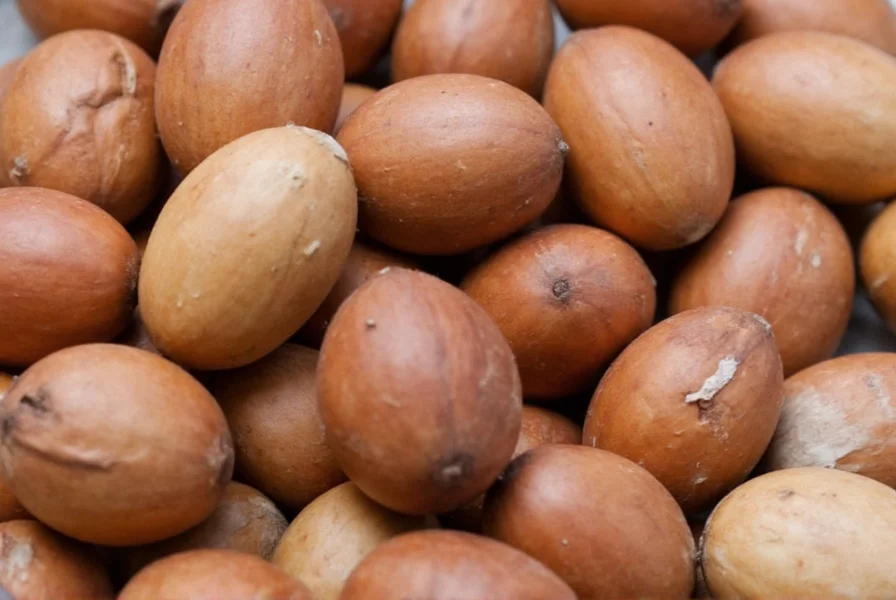Many home cooks and food enthusiasts wonder about the true nature of nutmeg fruit, often mistakenly believing nutmeg itself is a fruit. Understanding the botanical reality helps clarify why this popular spice has such a distinctive flavor profile and how it connects to its tropical origins. The Myristica fragrans tree, native to the Banda Islands in Indonesia, produces this remarkable fruit that yields two separate spices from a single source.
The Nutmeg Tree and Its Fruit
The Myristica fragrans is an evergreen tree that grows 6-12 meters tall in tropical climates. After flowering, it produces a fleshy, yellow-orange fruit approximately 5-10 cm in diameter that resembles a small peach or apricot. This fruit matures over a 9-12 month period, eventually splitting along a natural seam to reveal its precious contents.
Inside the ripe nutmeg fruit, you'll find a single seed covered by a vivid red, web-like membrane. The seed itself is the source of nutmeg spice, while the red membrane (called an aril) dries to become mace. This dual-spice production from one fruit makes the nutmeg tree particularly valuable in culinary traditions worldwide.

From Fruit to Spice: The Harvesting Process
Nutmeg fruit harvesting requires careful timing. Farmers collect the fruits just as they begin to split open naturally, indicating peak ripeness. The harvesting season typically occurs twice yearly in tropical growing regions.
After collection, processors separate the valuable components:
| Component | Processing Method | Final Product |
|---|---|---|
| Red aril | Removed from seed and dried for 10-14 days | Mace (spice with more delicate flavor) |
| Seed | Dried for 1-2 months, sometimes smoked | Nutmeg (hard, brown seed kernel) |
| Fruit flesh | Rarely used commercially | Local consumption or animal feed |
Nutritional Profile of Nutmeg Components
While most people consume only the processed spices, the fresh nutmeg fruit contains valuable nutrients. The fleshy outer portion provides:
- Vitamin C (approximately 20mg per 100g)
- Dietary fiber (2.5g per 100g)
- Small amounts of potassium and magnesium
- Natural fruit sugars (8-10%)
The seed (nutmeg) contains essential oils including myristicin, which gives nutmeg its distinctive aroma and flavor. When consumed in culinary amounts, nutmeg offers trace minerals like manganese, copper, and magnesium. However, the fruit flesh remains largely underutilized outside its native growing regions.
Culinary Applications Beyond the Spice
While most Western kitchens only use the dried nutmeg and mace, traditional cuisines in nutmeg-growing regions incorporate more parts of the fruit. In Indonesia and the Caribbean, locals sometimes:
- Make preserves from the ripe fruit flesh
- Create refreshing beverages using the fruit pulp
- Use young, unripe fruits in savory dishes
- Prepare traditional medicines from various fruit components
Understanding the complete nutmeg fruit helps explain why freshly grated nutmeg has a more complex flavor than pre-ground versions. The drying process concentrates certain compounds while diminishing others, creating the familiar spice profile most consumers recognize.
Growing Regions and Harvesting Practices
Nutmeg fruit grows exclusively in tropical climates near the equator. Major production occurs in:
- Indonesia (particularly the Banda Islands, its native home)
- Grenada in the Caribbean (second largest producer)
- India (Kerala and Tamil Nadu regions)
- Sri Lanka
- Malaysia
Sustainable harvesting practices remain crucial for maintaining nutmeg tree populations. Most nutmeg trees begin fruiting after 7-9 years and can produce for up to 60 years. Hand-picking ensures only properly ripened fruits are collected, preserving quality and tree health. The "nutmeg fruit harvesting season" varies by region but typically occurs between June and December in most growing areas.

Safety Considerations for Nutmeg Consumption
While culinary use of nutmeg is perfectly safe, understanding proper quantities matters. The compound myristicin, responsible for nutmeg's flavor, can cause adverse effects when consumed in large amounts (typically more than 2-3 teaspoons at once). Symptoms may include:
- Dizziness
- Nausea
- Increased heart rate
- Disorientation
These effects usually pass within 24 hours but highlight why moderation matters with this potent spice. When exploring "nutmeg fruit health benefits," remember that traditional medicinal uses differ from culinary applications, and consulting healthcare professionals is advisable for therapeutic purposes.
Common Misconceptions About Nutmeg
Several myths persist about nutmeg fruit and its spice:
- Misconception: Nutmeg is a fruit itself
- Reality: It's the seed inside the fruit
- Misconception: Nutmeg and mace come from different plants
- Reality: Both come from the same fruit (seed vs. aril)
- Misconception: Fresh nutmeg fruit is widely available commercially
- Reality: It's rarely exported due to short shelf life
Understanding these distinctions helps consumers appreciate the journey from "nutmeg tree fruit to kitchen spice" and make informed choices about this versatile ingredient.
Is nutmeg actually a fruit?
No, nutmeg is not a fruit. It's the seed of the Myristica fragrans tree's fruit. The actual fruit is a yellow, peach-like drupe that contains the nutmeg seed surrounded by a red aril (which becomes mace when dried).
What does fresh nutmeg fruit taste like?
The fresh nutmeg fruit has a mildly sweet, somewhat tart flavor similar to other tropical fruits like peach or apricot. The fleshy outer portion is edible but rarely available outside growing regions due to its short shelf life and delicate nature.
Can you eat the whole nutmeg fruit?
You can eat the fleshy outer portion of the ripe nutmeg fruit, but the hard seed (nutmeg) requires processing before consumption. The seed must be dried for 1-2 months before it becomes the spice we use. Consuming raw, unprocessed seeds isn't recommended due to their tough texture and concentrated compounds.
How is nutmeg different from mace?
Nutmeg and mace come from the same fruit but are different components. Nutmeg is the seed itself, while mace is the bright red, lacy membrane (aril) that surrounds the seed. Mace has a more delicate, slightly sweeter flavor compared to nutmeg's stronger, warmer taste.
Why isn't fresh nutmeg fruit available in most grocery stores?
Fresh nutmeg fruit has a very short shelf life and is extremely delicate, making it impractical for international shipping. The fruit begins to deteriorate within days of harvesting, which is why only the dried seed (nutmeg) and aril (mace) are commercially available outside tropical growing regions.
Conclusion
Understanding the true nature of nutmeg fruit enhances appreciation for this versatile spice. The journey from tropical tree to kitchen spice involves careful harvesting and processing that preserves the unique flavors we enjoy in both sweet and savory dishes. While most consumers only interact with the finished spices, recognizing the complete botanical picture helps explain nutmeg's distinctive characteristics and proper culinary applications. Whether you're exploring "nutmeg fruit identification" for educational purposes or seeking to deepen your culinary knowledge, this information provides valuable context for one of the world's most fascinating spice sources.











 浙公网安备
33010002000092号
浙公网安备
33010002000092号 浙B2-20120091-4
浙B2-20120091-4